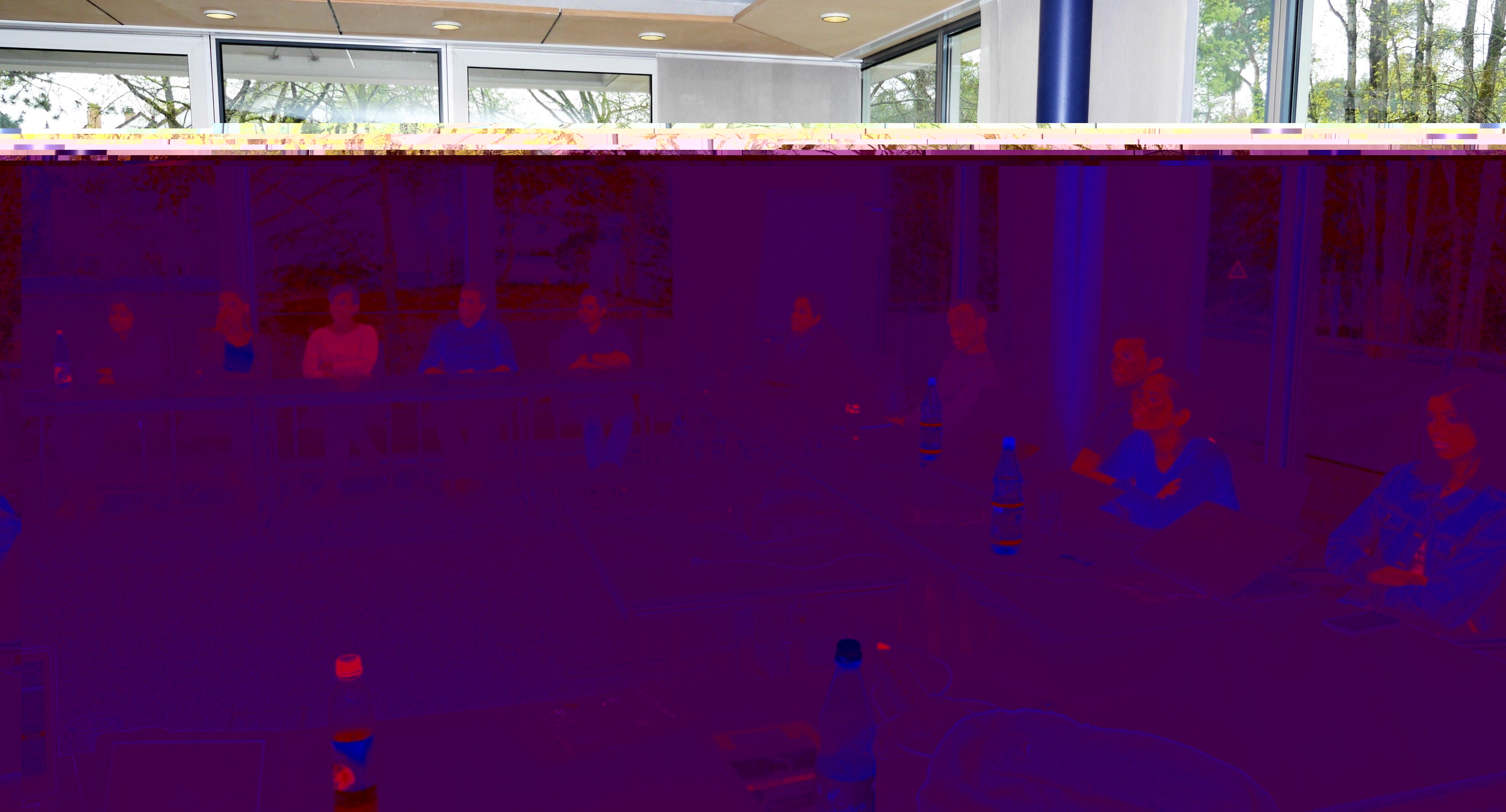1st Session of joint venture Hackathon between FabSpace 2.0 and Spacenus GmbH
On Friday, 13th April, FabSpace 2.0 and Spacenus GmbH jointly started their recent Hackathon at the facilities of Spacenus in Darmstadt. The Hackathon was designed as two separate 10 hours half hackathon program. This new concept has been chosen to allow participants to work between both events to achieve better results in sense of technical solutions.

Fig: Participants at the Hackathon at Spacenus GmbH
Sascha Heising, Bayzidul Islam (both from FabSpace 2.0) and Lionel Born together with Riazuddin Kaswar from Spacenus welcomed the attendees and gave a brief overview of the objectives and goals to be achieved. An international mixed group of students followed the invitation and were curious to start playing with Earth Observation (EO) data. On top of that, Spacenus was thankfully sponsored the venue, food & drinks for the whole day to provide a nice environment for the participants.

Fig: Welcome speech by Sascha Heising (right) and Introduction to the challenge by Bayzidul Islam (left) from FabSpace
The first session was all about introduction, team-building and defining challenges to be tackled. So first, the participants decided to do a state of the art analysis of the challenge taken as âHow to deal with cloud and cloud shadows of Sentinel-2 satellite imageryâ which is an exploring each pixels of imagery based approach. The second, is to explore bands of satellite imagery to know the spectral behavior to the ground features which will enable to select the input data of a cloud and shadow detection algorithm. In the third step, the existing approaches to be scrutinize to understand and develop the best approach to deal the challenge more effectively and efficiently. Finally, the computer vision approach as Machine Learning algorithm such as Generative Adversarial Network (GAN) and the t-Distributed Stochastic Neighbor Embedding (t-SNE) has been selected to develop the model. Both, FabSpace and Spacenus crews were provided hands-on support to guide the participants to stick to their goals.

Fig: Welcoming the guests and detailed insight to the challenge and introduction to the ESA project GFaaS by Riazuddin Kawsar (left) and Lionel Born (right) from Spacenus GmbH
The first day was full of busy working with team formation and understanding the topic. The team worked on to create a strategic plan of their work approach by sharing their knowledge and connecting expertsâ opinion. The first day was concluded by summarizing the day long activities and introducing to the next steps in the next session in May.

Fig: Comfortable working environment at event venue at Spacenus GmbH
The next session will conclude the hackathon but before that everybody will be already excited to see the results achieved in between. Experts from Spacenus also introduce to the participants about their ongoing ESA project Geospatial Framework as a Service (GFaaS) [https://spacenus.com/news-1/2018/4/21/geospatial-framework-as-a-service-esa-kick-start-project-kick-off] where there is a wide opportunity for participants to take part and processess, store and manupulate Earth Observation (EO) data. The Hackathon itself is a start but there is a tremendous opportunities for the participants and enthusiasts to join the FabSpace network and explore how real professionals (i.e. Spacenus GmbH) are translating satellite imagery to meaningful information.

Fig: Food and drinks offered by Spacenus GmbH
Last but not the least, If you are curious about this hackathon you can just step by to join the 2nd session on 4.5.2018 starting at 10:00 again in the facilities of Spacenus, MarienburgstraÃe 22, Darmstadt. Follow the link for more information and event registration here: http://explorepixels.fabspace-germany.de/





